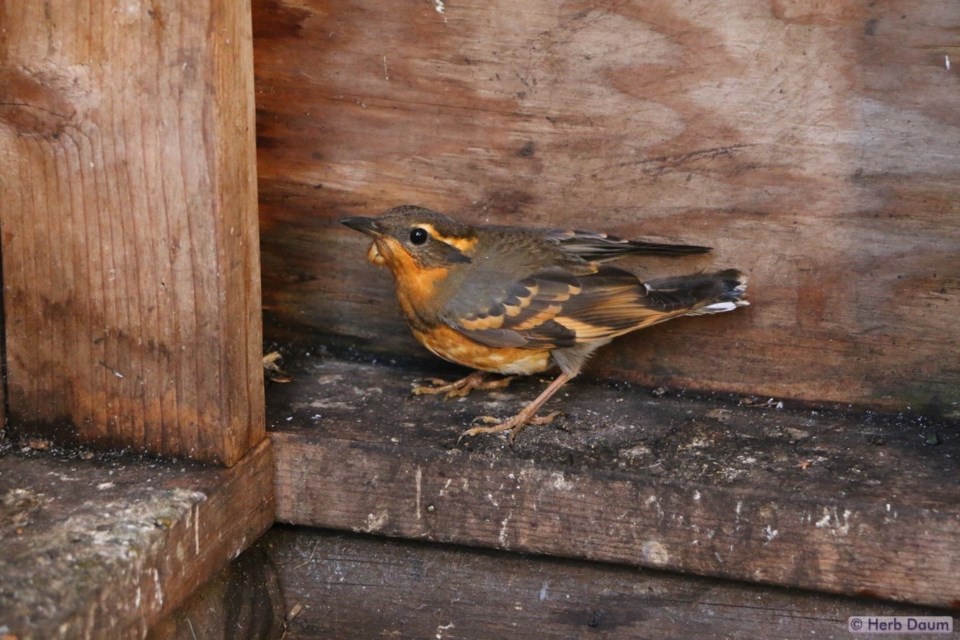FLIGHT FEATHERS: Fall is when varied thrushes return to our neighbourhoods from their summer homes back in the bush.
It is also when Powell River Orphaned Wildlife Society (PROWLS) receives the most calls for these “robins in tuxedos.” Unfamiliar with cars and cats, and not having learned to distinguish a clear flight to a tree from the reflection in a window, they are frequent and timid patients.
Their high stress levels mean they frequently refuse to eat and constantly look for a way to escape. This one had escaped from a cat, leaving most of her tail feathers and flight feathers with the feline. Antibiotics and time were the prescription. As she slowly became accustomed to the routine in our hospital, we moved her to a larger cage that allowed her to stretch her wings and hop from one perch to another.
As her flight feathers came in, she was moved to the large flight cage, where she flew from end to end, occasionally stopping to sit in the sun. She slowly regained the weight she had lost when she first arrived and her flight muscles became strong again. Flight conditioning is key before the birds can be released.
When her feathers were once again long and beautiful and she was active and strong, she was ready to go. This was a very happy release.
Join the Peak’s email list for the top headlines right in your inbox Monday to Friday.



